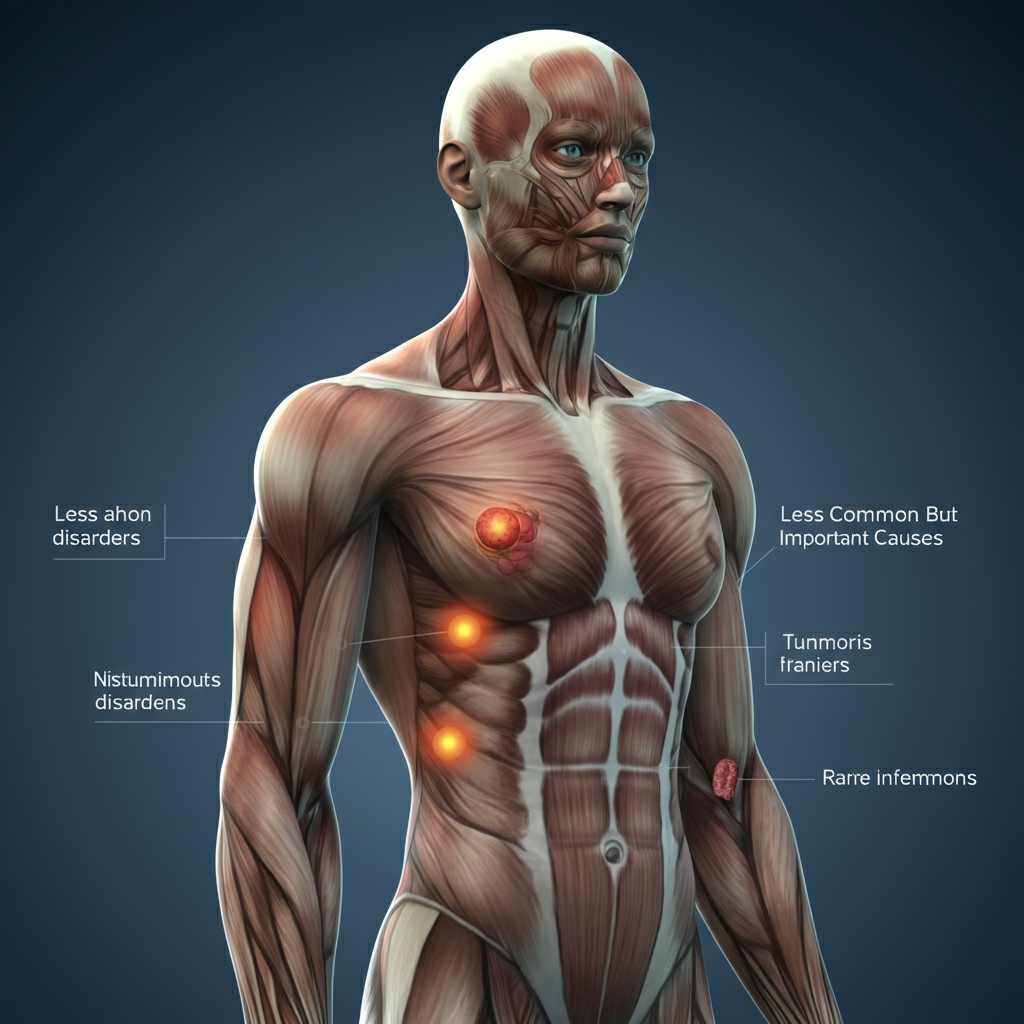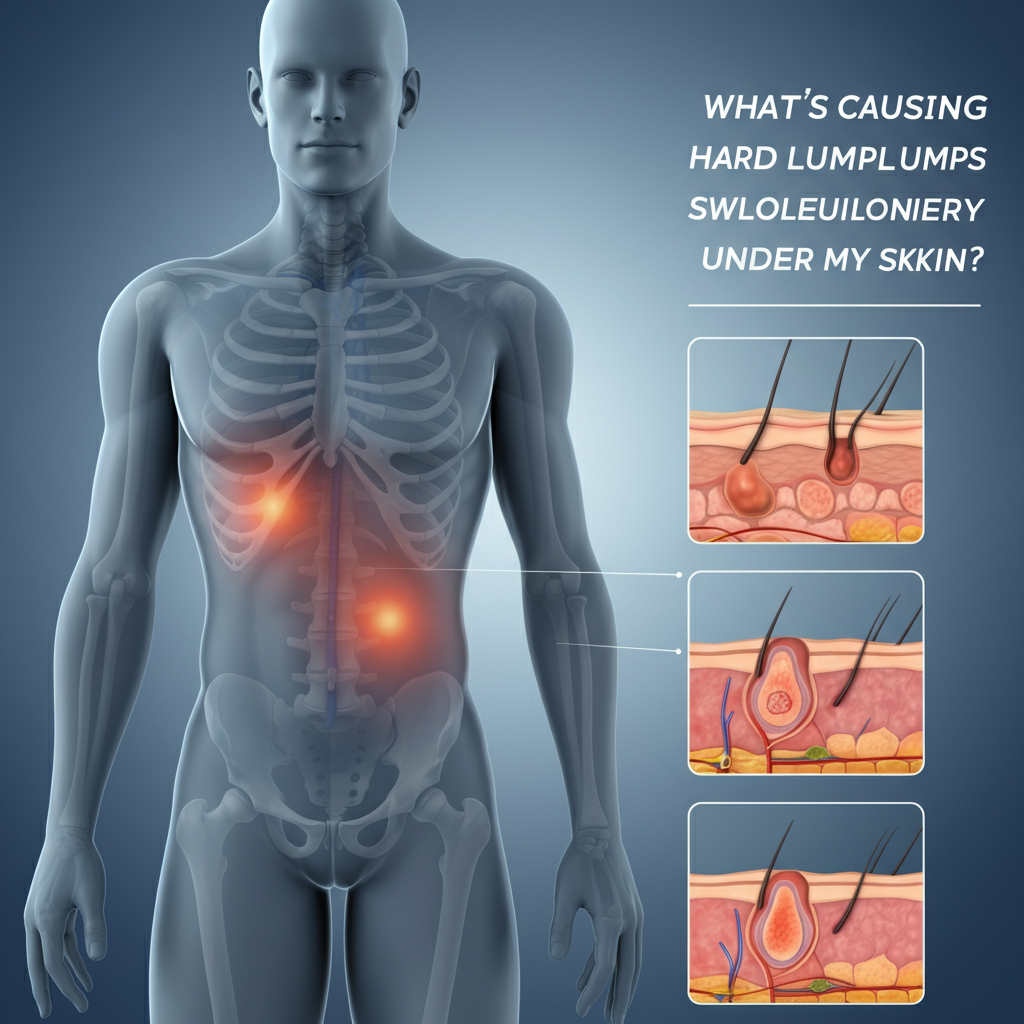Discovering a hard lump under your skin can be unsettling. You may find yourself wondering what it is, why it’s there, and if it’s something serious. The truth is, skin lumps are quite common, and many are harmless. However, some may warrant closer attention or professional medical advice.
This guide will help you understand what hard skin lumps are, explore common and less common causes, and provide insights into their diagnosis, treatment, and prevention. Whether you’re dealing with one or simply want to be prepared, read on to discover everything you need to know.
Understanding Skin Lumps
What Are Skin Lumps?
A skin lump is a noticeable mass or swelling beneath the surface of the skin. These lumps can vary in size, shape, texture, and color. Some are soft, while others are firm or hard. Skin lumps may be painless, tender, or even painful, depending on their cause.
Common Locations Where Skin Lumps Appear
Skin lumps can appear just about anywhere on your body. Common locations include:
- The neck, armpits, and groin (often where lymph nodes reside).
- The back, thighs, and arms (commonly associated with lipomas).
- The chest or face (frequent spots for sebaceous cysts).
Benign vs Malignant Lumps
It’s crucial to differentiate between benign (non-cancerous) and malignant (cancerous) lumps. While most hard skin lumps are benign, some may indicate a more serious condition, like skin cancer. Factors like size, growth rate, and associated symptoms can help guide further investigation.
Common Causes of Hard Lumps Under the Skin
Cysts
Epidermoid Cysts
Epidermoid cysts are small, round lumps filled with solid material or fluid. They often form due to blocked hair follicles or skin trauma. These cysts grow slowly and are typically painless.
Sebaceous Cysts
Sebaceous cysts develop due to a blocked sebaceous gland. Found commonly on the scalp, face, neck, and upper body, these lumps have a visible opening and can produce a foul-smelling discharge if ruptured.
Lipomas
Lipomas are benign, fatty lumps that develop between the skin and muscle layer. They feel soft and rubbery and move slightly under pressure. Lipomas are often painless and grow slowly over time.
Abscesses
An abscess is a painful, pus-filled lump caused by an infection. These are warm to the touch and may be accompanied by redness and swelling. Immediate medical attention may be necessary to drain the abscess and treat the underlying infection.
Lymph Nodes
Lymph nodes play a vital role in your immune system, filtering harmful substances. Swollen lymph nodes, often felt as lumps under the jaw, armpits, or groin, could be a sign of infection. However, persistent swelling should be evaluated for other causes, like lymphoma.
Dermatofibromas
Dermatofibromas are firm, small, benign growths that may feel like a hard lump under the skin. They are usually painless but could be itchy or tender when touched.
Less Common But Important Causes

Skin Cancer
Basal Cell Carcinoma
These lumps appear as shiny or waxy bumps, often on sun-exposed areas like the face, neck, or arms. They grow slowly and rarely spread but still require treatment.
Squamous Cell Carcinoma
Squamous cell carcinoma may manifest as firm, scaly lumps. These can grow and spread without treatment.
Melanoma
Melanoma is a more aggressive type of skin cancer that often starts as a mole. Any new, irregular, or rapidly changing lump or mole should be evaluated immediately.
Bacterial and Fungal Infections
Bacterial
Conditions such as cellulitis cause painful, red lumps under the skin. Prompt medical treatment is necessary to prevent further spread of infection.
Fungal
Fungal infections can also contribute to lump formation, especially in moist areas of the skin.
Reactions to Injuries or Foreign Objects
Sometimes, your body reacts to insect bites, splinters, or other foreign objects by forming a lump. These reactions often include redness, swelling, or itching.
Diagnosing Hard Lumps What to Expect
When to See a Doctor
Consult a doctor if:
- The lump grows rapidly or changes shape.
- It becomes painful, red, or warm to the touch.
- You experience unexplained weight loss, fever, or fatigue.
- The lump lasts more than two weeks without improvement.
Diagnostic Procedures
- Physical Examination
A doctor will assess the location, size, shape, and texture of the lump.
- Biopsy
A sample may be taken for testing if the lump appears potentially malignant.
- Imaging Tests
Ultrasounds, MRIs, or CT scans may be ordered to gain deeper insights into the lump’s nature.
Treatment Options
Medical Treatments
- Cysts and Lipomas
Small cysts may resolve on their own, while larger ones require excision. Lipomas can also be surgically removed if they cause discomfort.
- Abscesses
These require drainage and antibiotics.
- Skin Cancer
Treatment options include surgical excision, radiation, and chemotherapy, depending on the cancer type and stage.
Home Remedies and Self Care
For mild or benign lumps:
- Use warm compresses to alleviate discomfort.
- Keep the area clean and avoid picking or squeezing the lump.
- Over-the-counter pain relievers can manage soreness.
Prevention Strategies
General Skin Care
- Clean your skin daily and keep it moisturized.
- Apply sunscreen to protect from harmful UV rays.
Lifestyle Adjustments
- Stay hydrated and eat a balanced diet.
- Avoid known irritants and maintain a healthy lifestyle to support immune health.
Real Stories and Examples
Case 1: Emily discovered a small lump on her thigh. Diagnosed as a lipoma, it was successfully removed with a minor outpatient procedure.
Case 2: Simon faced recurrent abscesses due to a skin condition. A dermatologist provided ongoing care to prevent new lumps.
These stories emphasize the importance of seeking professional advice and prompt action.
People Also Ask
What does a hard lump under the skin mean?
A hard lump under the skin could signify a cyst, lipoma, lymph node swelling, infection, or other conditions. A medical evaluation is recommended if you’re unsure.
How can I tell if a lump is cancerous?
Cancerous lumps often grow rapidly, change in size or color, and may cause symptoms like pain, fatigue, or unexplained weight loss.
Can stress cause lumps under the skin?
While stress doesn’t directly cause lumps, it may exacerbate conditions like acne, which can result in skin nodules.
Do hard lumps go away on their own?
Many benign hard lumps, such as cysts, may resolve on their own. However, some require medical attention.
Are hard subcutaneous lumps always dangerous?
Not necessarily. Most subcutaneous lumps are benign, but it’s essential to monitor for any changes or concerning symptoms.
Taking Control of Your Skin Health
Hard skin lumps can have various causes, from harmless cysts to more serious conditions like cancer. By understanding the types, causes, and treatment options available, you can take proactive steps to monitor and address these lumps.
Early detection and appropriate care are vital. Consult a medical professional for any concerns.
